...
Blog categories
- Sweet recipes (95) click
- Salty recipes (8) click
- Cooking (27) click
- Seasonal recipe ideas (64) click
- Things to know (21) click
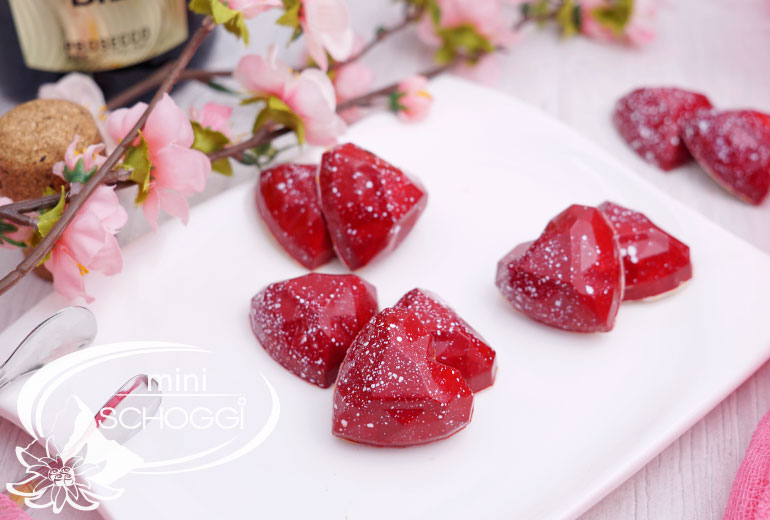
Just in time for Valentine's Day, we have a great recipe to pamper yourself and your loved ones. The hearts, which glow an intense red, are filled and sealed in a beautiful and modern diamond heart shape. Hidden inside this seductive sin is a sensual rose chama ganache. Now that's pure romance! Learn how to make the heart-shaped chocolates yourself in this article.
Be sure to try out the recipe and seduce your better half!
Quantity: 24 chocolates
Cooling time: 2 hours in total
Difficulty: Medium
Shelf life: 1 month
| Whole cream | 70 g | ||
| Glucose | 10 g | ||
| Sorbitol | 5 g | ||
| Butter | 5 g | ||
| Milk couverture | 140 g | ||
| Marc de Champagne | 12 g | ||
| Rose water | 1 TSP |

For the ganache, boil the whole cream together with the glucose, sorbitol and butter in a pan. Stir constantly so that the mixture does not burn. As soon as the cream mixture comes to the boil, remove it from the heat and pour it over the Milk Couverture Drops in a bowl. Leave the bowl to stand for about 1 minute so that the hot cream can melt into the drops and then stir with a whisk until the mixture is homogeneous. The ganache must now cool for about 5 minutes at room temperature. Finally, add the Marc de Champagne and the rose water and stir the two liquids well. Pour the finished ganache into a piping bag and leave to cool at room temperature for about 20 minutes. In the meantime, you can start preparing the praline mould.
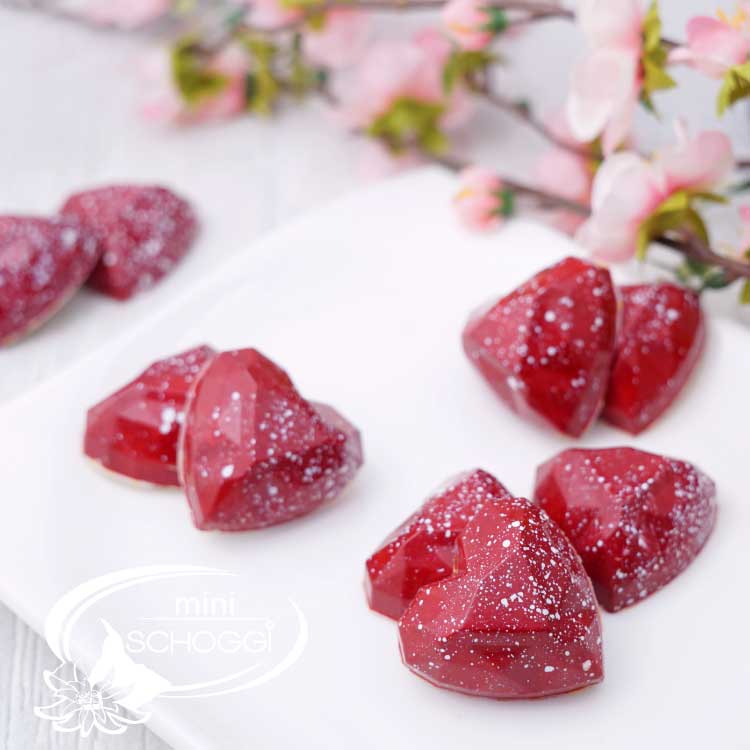
Place the cocoa butter colours in a warm water bath (max. 40 ºC).
For all polycarbonate moulds, always clean thoroughly! It doesn't matter whether you are working with praline moulds, bar moulds or figurine moulds. Thorough cleaning / polishing with a kitchen towel will give the end products their desired shine. Once you have thoroughly cleaned the mould, you can continue with the cocoa butter. Take the white cocoa butter paint out of the water bath, shake it vigorously and dry it thoroughly, as no water should get into the paint. Pour some of the liquid colour into a small bowl, dip a toothbrush into it and now sprinkle the mould with small white splashes by dragging the bristles of the brush over your finger. Then wipe the mould over a paper towel to clean it a little and leave the paint to set at room temperature for about 5 minutes.
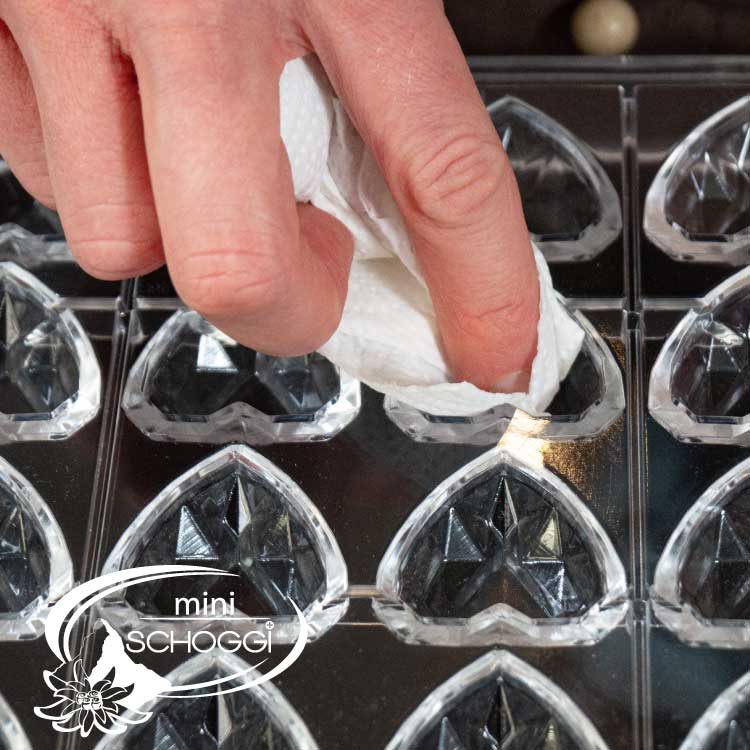
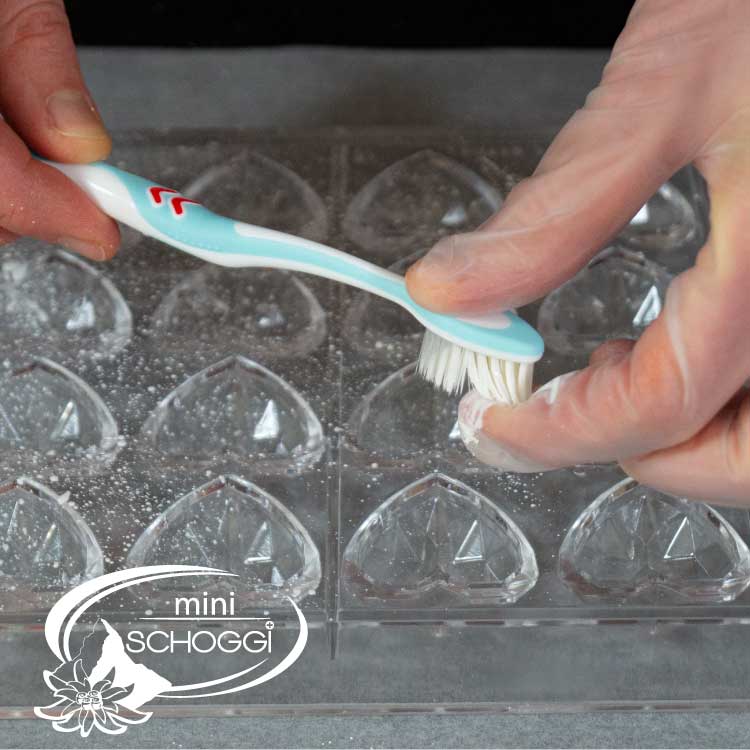
Once the sprinklers are on, you can now paint or spray the shape completely with the red colour . Either paint the shape with a brush or spray the colour into an airbrush gun for cocoa butter colours (interested in our airbrush praline course?). Both methods are best suited for this. Turn the mould over from time to time so that you can be sure that the paint really fills every corner of the mould. Scrape off the excess paint from the mould with a metal horn and again wipe the mould over a paper towel. Allow the paint to dry again at room temperature for 5 to 10 minutes.
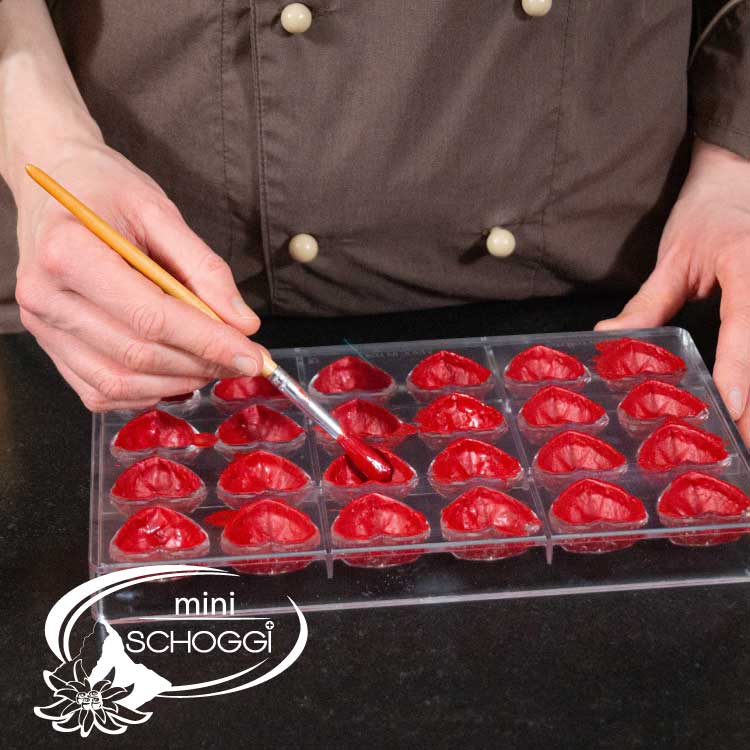
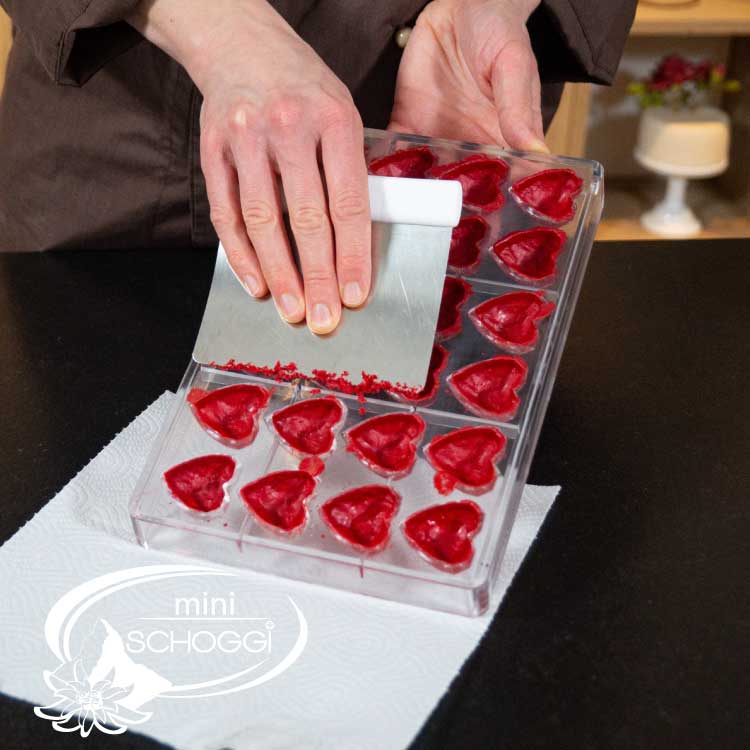
Now it's time to pour the shells. Pour the tempered couverture into a piping bag, cut a slightly larger hole in it and fill the mould completely with the white chocolate. Tap the sides of the chocolate mould with a spatula, then empty it completely back into your tempering machine and tap the edge of the mould again so that the chocolate can flow out evenly and you get a nice, thin layer of chocolate. If you only have a small tempering machine at home, we recommend that you pour the mould into a large bowl so that you don't make such a mess.
Then, again, run a metal scraper over the mould to remove any excess couverture. Place the mould in the fridge for about 5 minutes.
You don't know how to temper? Then come to our couverture tempering course or read this blog post.
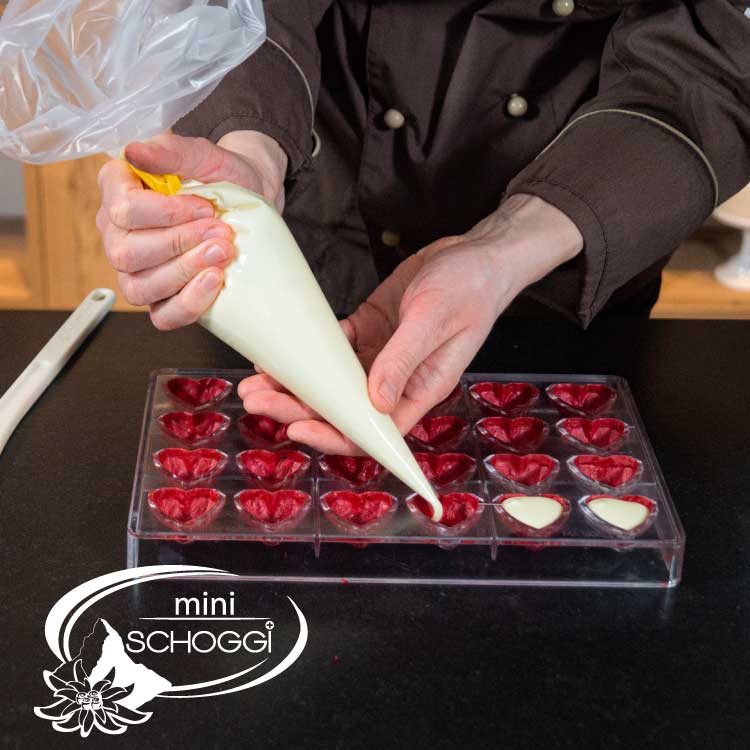
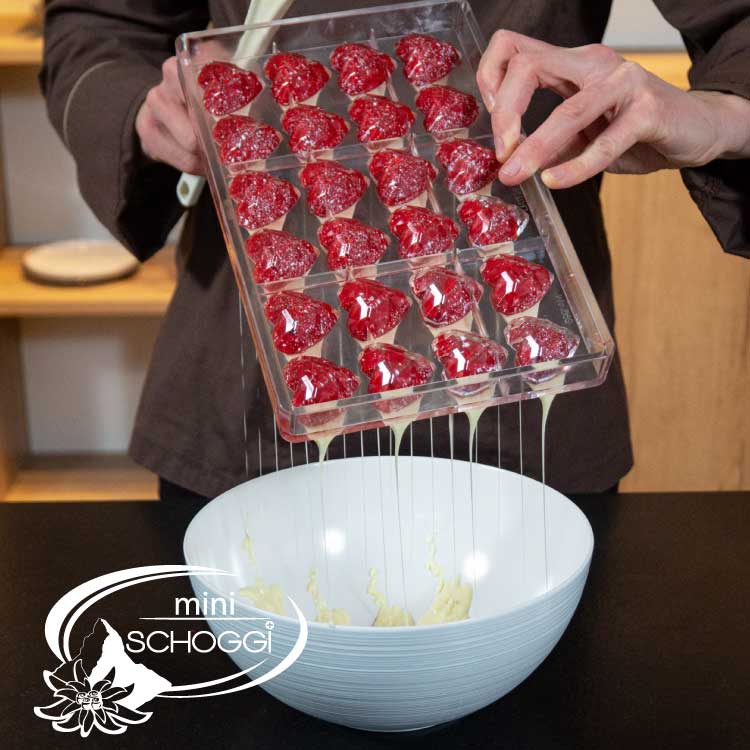
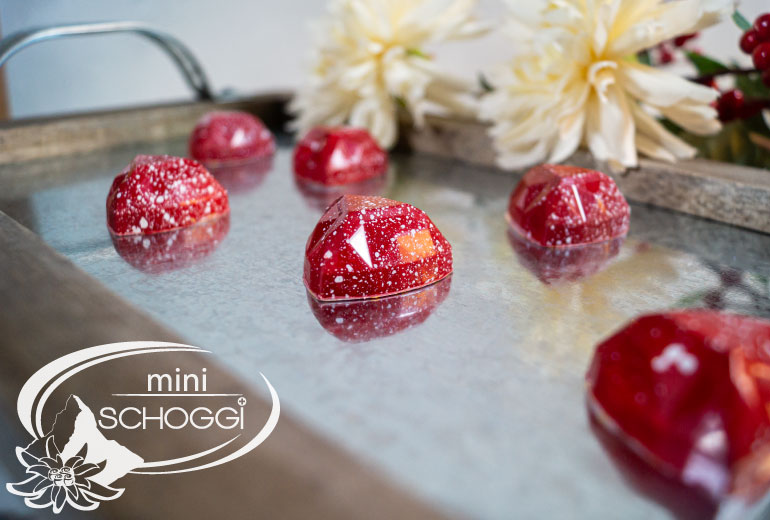
By now the ganache should have cooled enough to fill the pre-poured chocolates. Take the praline mould out of the fridge, cut a small hole in the piping bag with the ganache and fill it to about 2-3 mm below the edge of the heart-shaped praline mould. Tap the praline mould several times on the table to get rid of any air bubbles and to get a smooth surface. Now you can either put the mould in the fridge for about 1 hour or leave it at room temperature for at least 8 hours. This "resting time" allows the ganache to dry a little on the surface or to form a small skin and makes it much easier to seal.
As soon as this "skin" has formed, you can start sealing. To do this, pour the tempered couverture onto the front third of the praline mould.
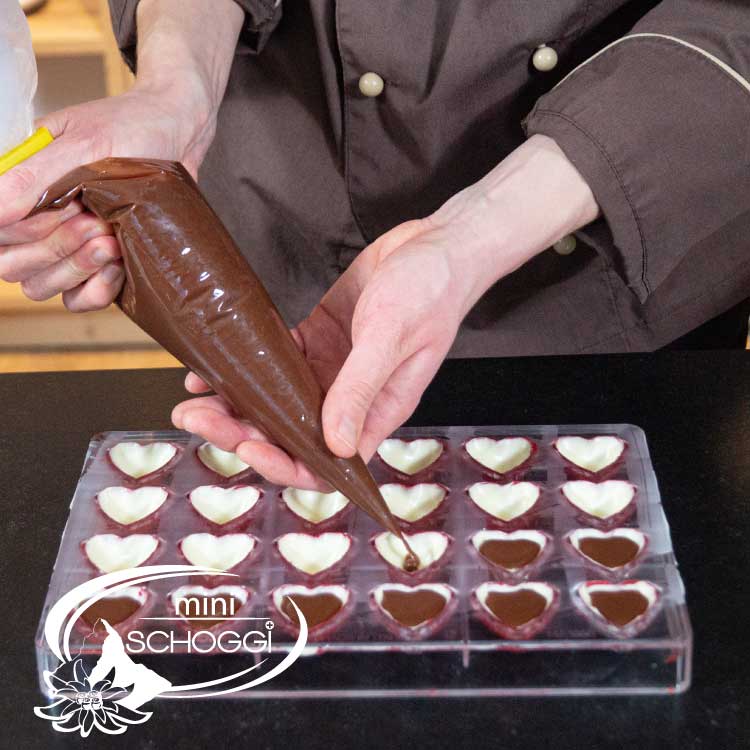
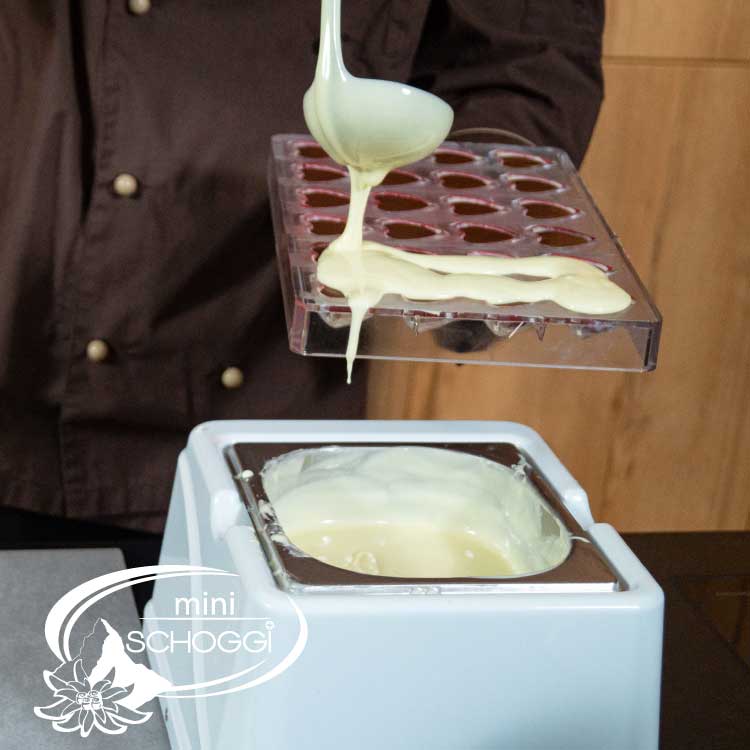
Now there are two possibilities. Either you simply spread the chocolate with a wide spatula once over the back of the mould and back into the tempering unit, or you do this with a chocolate tattoo. For this method, simply press the tattoo onto the mould with the chocolate, hold it at one end and then pull it backwards with the wide spatula . This spreads the couverture really evenly and seals the chocolates perfectly. You can simply scrape off the chocolate that runs out to the sides with a metal horn. Place the mould in the fridge for about 20 to 30 minutes.
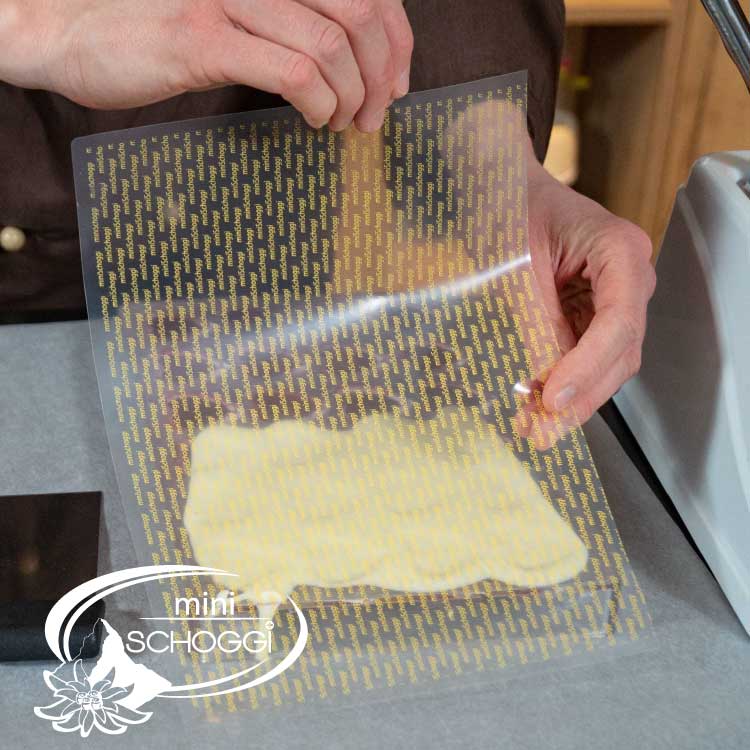

Take the mould out of the fridge and carefully remove the chocolate tattoo from the chocolate mould. Then stand the mould upright and flip it over onto your work surface. The chocolates will then release from the mould on their own. If some are still stuck in the mould, you can repeat this process. If they still don't come out, you can put the mould in the fridge for another 5 minutes and then try again.
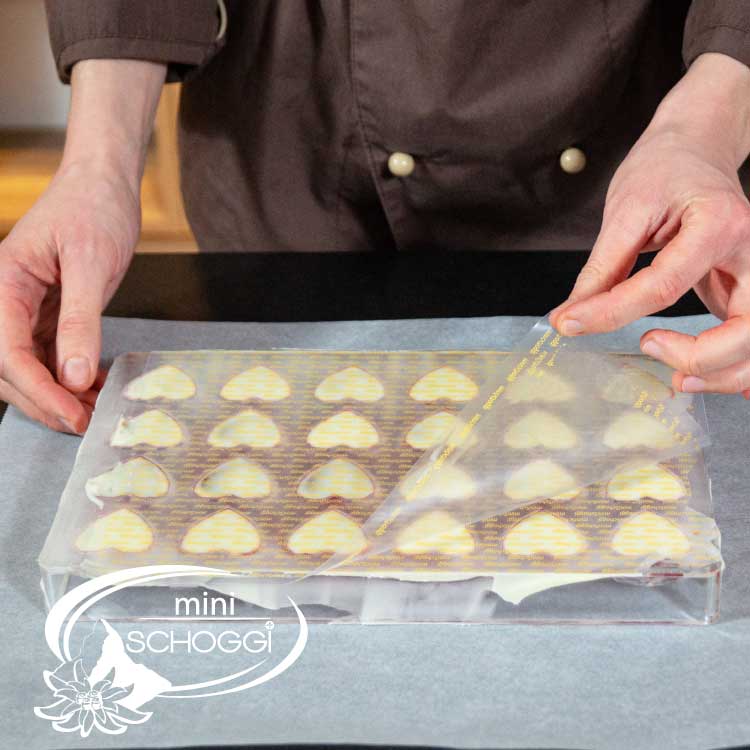
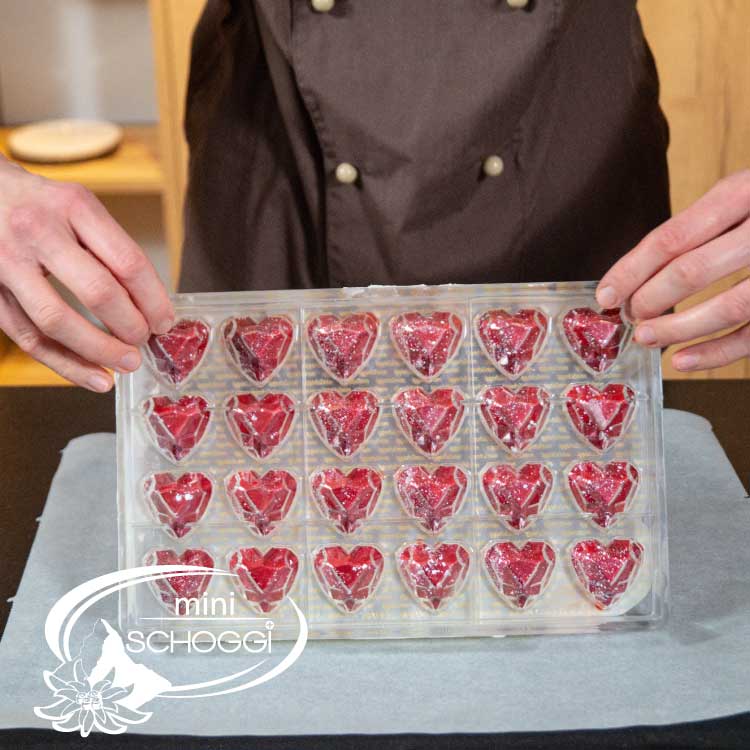
Now it's time to taste these heavenly chocolates or package them beautifully and give them as a gift.
The finished chocolates have a shelf life of up to one month. Of course, they taste best the first few days! You can simply store them at room temperature.

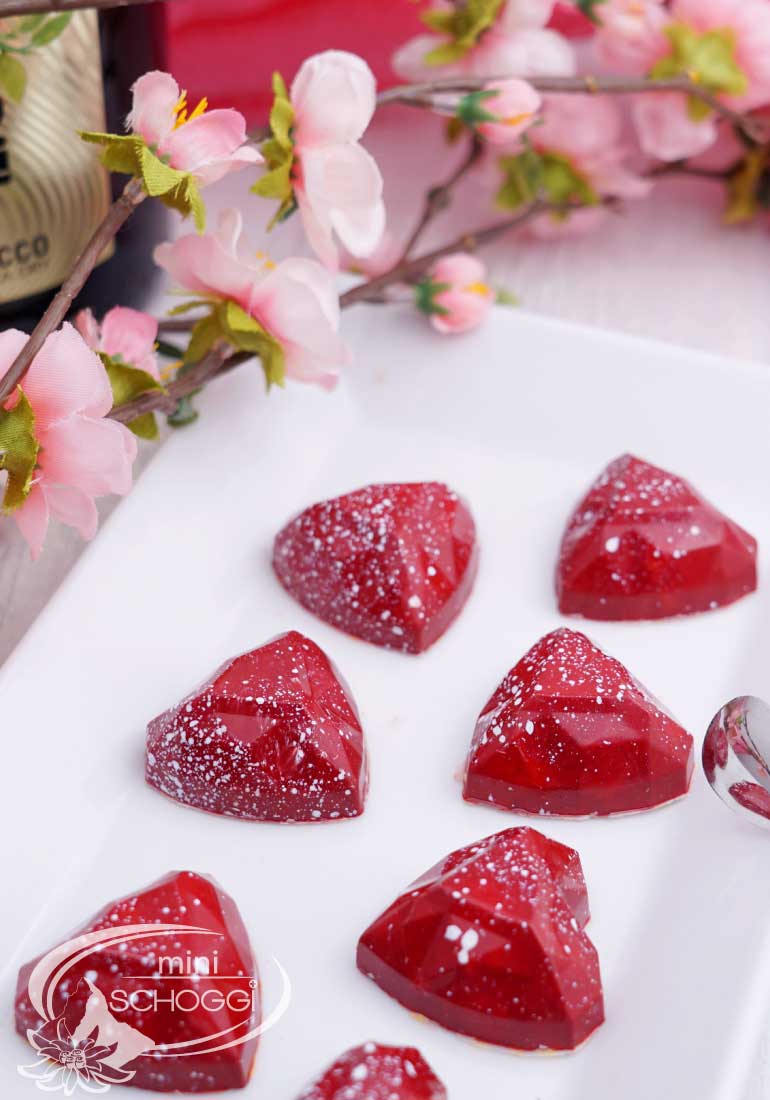
 Casting your own chocolate Easter bunnies
Casting your own chocolate Easter bunnies
 Make your own decor roulade
Make your own decor roulade
 Cinnamon star recipe
Cinnamon star recipe
 Correctly temper couverture and chocolate
Correctly temper couverture and chocolate
 Making Halloween chocolates
Making Halloween chocolates
Leave a comment